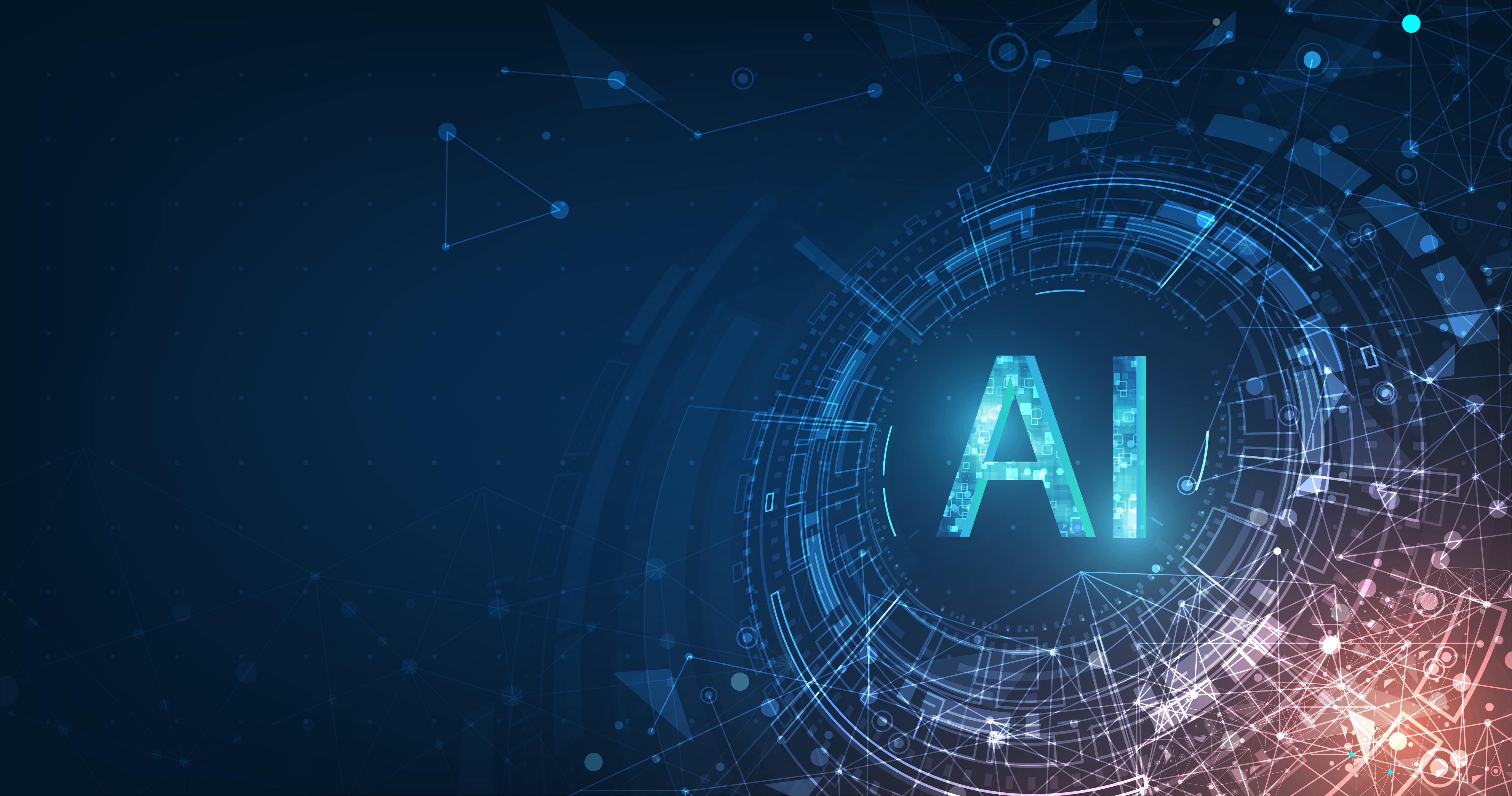
Revolutionizing Cyber Security with AI:Transforming Threat Detection and Swift Response
January 10,2025
By:Wan Muhammad Danial Hady (Executive, Industry Engagement & Collaboration Dept.) and Muhammad Amir Syazley bin Syahran (Intern, Industry Engagement & Collaboration Dept.)
In today’s hyper-connected digital ecosystem, the cybersecurity landscape is undergoing a profound transformation, evolving at an unprecedented pace as organizations become increasingly reliant on intricate digital infrastructures. This rapid digitization has simultaneously expanded the cyber threat landscape, giving rise to more sophisticated and multi-faceted attacks. Traditional cybersecurity measures, long considered sufficient, are now proving inadequate against the sophisticated techniques employed by malicious actors. Consequently, the integration of Artificial Intelligence (AI) into cybersecurity is not merely a technological upgrade but a revolutionary shift in the way threats are identified, analysed, and mitigated. This article delves into the profound ways in which AI is reshaping cybersecurity, its advantages, and the myriad challenges accompanying its implementation.
The sophistication of cyber threats has escalated dramatically over the years. Cyberattacks are no longer isolated efforts by individuals; they are orchestrated by well-organized groups, often with substantial resources, employing advanced strategies and tools. Threats now encompass a wide range of activities, from phishing and ransomware to advanced persistent threats (APT) and state-sponsored cyber- espionage. The speed at which these threats evolve, adapting to new technologies and security measures, presents a monumental challenge for traditional security systems that rely on pre-defined, signature-based threat detection.
Moreover, the attack surface has expanded exponentially with the proliferation of Internet of Things (IoT) devices, cloud computing, and the widespread adoption of remote work environments. These new technologies have introduced a host of new vulnerabilities that cybercriminals are quick to exploit. As organizations generate massive amounts of data across distributed networks, it becomes increasingly difficult to detect anomalies using conventional methods, necessitating a more dynamic and intelligent approach to threat detection and mitigation.
Artificial Intelligence, with its capacity to process and analyse vast amounts of data in real-time, has emerged as a formidable tool in the cybersecurity arsenal. AI, particularly through machine learning (ML) algorithms, offers the ability to not only detect but also predict potential threats by identifying patterns and anomalies that might escape human analysts. This ability to analyse complex datasets at speeds unattainable by humans transforms AI into a crucial asset in combating emerging cyber threats.
A significant leap forward in cybersecurity is the advent of AI-driven threat detection systems, which move beyond traditional signature-based methods. Legacy systems, which rely on recognizing predefined threat signatures, are ineffective against new or evolving threats, such as polymorphic malware, which can modify its characteristics to evade detection. AI, on the other hand, employs sophisticated machine learning models that analyse behavioural patterns and detect even the most subtle anomalies within network traffic, user behaviour, or system logs. These anomalies often indicate malicious activity, triggering real-time alerts for further investigation
What sets AI apart is its ability to learn and evolve continuously. By leveraging historical data from previous incidents, AI systems refine their algorithms, improving their accuracy in detecting novel threats. This continuous learning cycle is crucial as cybercriminals constantly innovate, developing new attack vectors. The proactive nature of AI allows organizations to not only detect but also mitigate potential threats before they cause significant damage, thus shifting the paradigm from reactive to proactive defence strategies.
While detection is a critical component of cybersecurity, the speed and efficacy of the response are equally important. AI-driven systems excel in automating the response process, significantly reducing the time between threat detection and neutralization. AI can automate routine but critical actions, such as isolating compromised systems, blocking malicious IP addresses, and deploying patches or updates, all without human intervention. This swift, automated response is especially critical in high-stakes situations such as ransomware attacks, where every second of delay could result in substantial financial or reputational damage.
Furthermore, AI enhances incident response by providing actionable insights. It can analyse the nature and origin of an attack, estimate its potential impact, and suggest specific countermeasures tailored to the threat’s characteristics. In more advanced systems, AI can even autonomously execute these countermeasures, effectively neutralizing threats before human analysts are aware of their presence.
The integration of AI into cybersecurity offers numerous advantages, significantly enhancing an organization’s defensive capabilities.
AI's ability to process enormous datasets enables it to identify patterns that would be invisible to human analysts. By correlating subtle deviations from normal behaviour across multiple vectors—such as user activities, network traffic, and system logs—AI can identify threats that would otherwise go unnoticed. This precision reduces the number of false positives, allowing security teams to focus on genuine threats, thereby increasing overall efficiency.
One of AI’s most significant benefits is its ability to reduce response times dramatically. Automated systems can act immediately upon detecting a threat, significantly shrinking the window of opportunity for attackers. This capability is particularly important in protecting critical infrastructure and sensitive data, where delayed responses can have catastrophic consequences.
As organizations grow and their digital footprints expand, maintaining consistent security across increasingly complex environments becomes a daunting challenge. AI's scalability enables it to handle vast amounts of data and monitor multiple systems simultaneously, ensuring that cybersecurity measures can keep pace with the organization’s growth. This adaptability ensures that security systems remain effective regardless of the size or complexity of the network.
While implementing AI-driven security systems involves significant upfront investment, the long-term cost savings can be substantial. By automating routine tasks and improving the efficiency of threat detection and response, AI reduces the need for large security teams and mitigates the risk of costly data breaches, which can have far-reaching financial and reputational consequences.
Despite its advantages, the integration of AI into cybersecurity is not without challenges. Organizations must navigate several technical, ethical, and operational obstacles to fully realize AI’s potential
AI systems rely on vast amounts of data to function effectively. The quality and quantity of the data used to train AI models are critical determinants of their success. Biased, incomplete, or outdated data can lead to inaccurate predictions and false alarms, undermining the effectiveness of AI-driven security systems. Ensuring that AI models are trained on diverse, representative, and continuously updated datasets is an ongoing challenge that organizations must address to ensure AI’s efficacy.
While AI enhances cybersecurity, it can also be exploited by cybercriminals. Adversarial attacks—where attackers manipulate AI systems by feeding them malicious or misleading data—pose a significant threat. Techniques such as data poisoning, where attackers corrupt the training data used by AI models, can lead to incorrect threat assessments and vulnerabilities within the system itself. Developing robust AI models capable of withstanding such attacks is a critical area of ongoing research.
The use of AI in cybersecurity raises important ethical and privacy concerns. AI systems often require access to vast amounts of sensitive data, raising the risk of potential privacy violations if not managed responsibly. Moreover, the use of AI for surveillance and monitoring can lead to ethical dilemmas about the extent to which organizations should intrude on user privacy in the name of security. Striking a balance between effective security and privacy protection remains a key challenge for organizations adopting AI-driven solutions.
As AI becomes more integrated into cybersecurity, there is a risk that organizations may become overly reliant on these systems, leading to complacency among human analysts. While AI can automate many tasks, human oversight remains critical to ensuring that AI-driven decisions are accurate and contextually appropriate. Organizations must find a balance between AI-driven automation and human involvement to maintain a robust and adaptable security posture.
Looking ahead, the role of AI in cybersecurity is set to expand even further. Emerging trends suggest that AI will become increasingly autonomous, enabling organizations to defend against even the most advanced threats with minimal human intervention.
AI is poised to revolutionize threat intelligence by aggregating and analyzing global data on emerging threats. By identifying patterns and trends across vast datasets, AI can provide organizations with actionable insights, enabling them to proactively defend against new and evolving attack methods.
AI’s integration with other technologies, such as blockchain and IoT, will lead to more comprehensive security solutions. For example, combining AI with blockchain could enhance data integrity and security in decentralized systems, while AI-powered tools could help secure IoT devices, which are often vulnerable to attack.
The future may see the rise of fully autonomous security systems capable of detecting, analysing, and responding to threats independently. These systems would continuously learn and adapt to new threats, offering unprecedented levels of resilience and protection against sophisticated cyberattacks.
In conclusion, Artificial Intelligence represents a paradigm shift in the field of cybersecurity. Its ability to process vast amounts of data, detect anomalies, and respond to threats swiftly and autonomously is transforming the way organizations approach digital security. While challenges remain, the potential of AI to enhance threat detection, reduce response times, and improve scalability is undeniable. As cyber threats continue to evolve, so too must the tools and strategies used to combat them, and AI is at the forefront of this evolution. Organizations that embrace AI-driven security solutions will be better equipped to protect their digital assets and maintain a secure and resilient posture in an increasingly interconnected world.
Source:
https://www.cyberdsa.com/data/editor/IEC-ARTICLE-Transforming-Threat-Detection-And-Swift-Response.pdf
